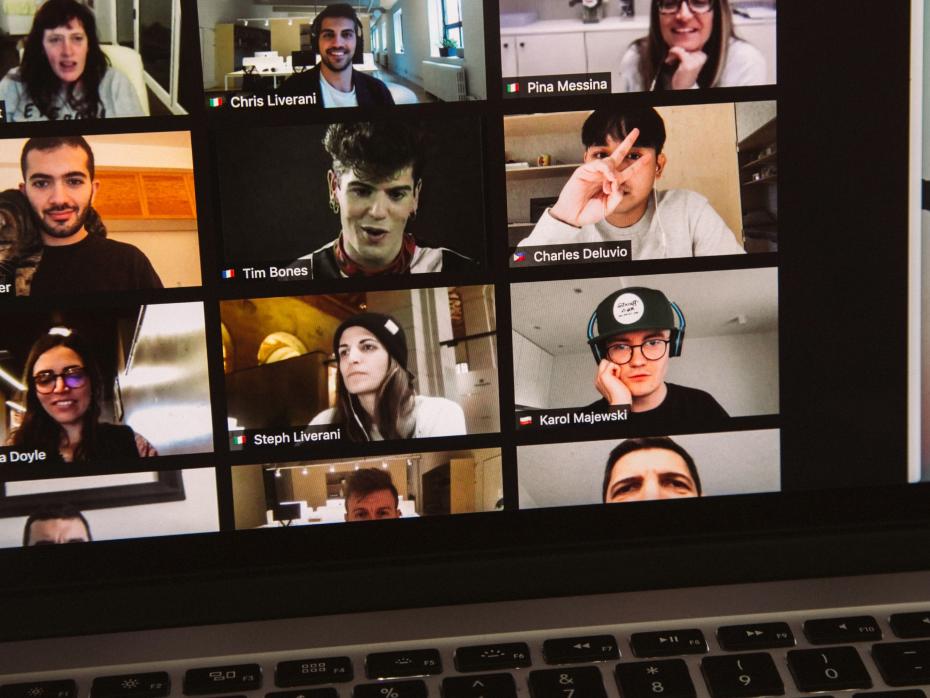
Optimise your synchronous online classes
Key Details
This video will cover:
00:33 Adapting your teaching materials to the online learning environment
01:49 Understanding different time scales when teaching online
02:46 Ensuring you remain student-centred when teaching to a screen
Transcript
Hi, my name is Jesper Hansen and I work as a lecturer in UCL Arena Centre for research-based education. Here I work with both students and staff in a number of roles.
In this video, I’ll be talking about some of my own experiences of turning my classes online.
And while I do not normally like the sort of top tip approach to teaching and learning, I do hope to make some concrete recommendations that you might be able to use in your own classes.
It’s beyond the scope of this video to talk at length about asynchronous and synchronous teaching, and therefore I will be focusing a lot on the synchronous side.
If like me however, you are mainly used to in-class teaching, I do suggest starting by thinking about the asynchronous parts, what can be done meaningfully outside the live sessions?
Because that forces you to think about that part which might be more alien to you, and you might avoid sort of transferring some of the things you would normally do in a classroom directly to your online teaching, which is definitely not a good idea.
If, like me, you taught for many years, you're probably used to being able to judge your own materials and see whether they are accessible and whether they are clear to your students.
I found this much more difficult when I began planning my first online classes, and I found that having the support of a colleague who acted as a critical friend was really valuable.
In particular when I began designing and redesigning my VLE [virtual learning environment] where I always felt things were quite clear, but where things were also scattered around in different places.
This wasn’t a problem I told on campus because I would just explain it to students and they would normally not struggle with it. However even though I had actually made changes in my first round of teaching, students were still finding it hard to navigate.
So now I really try to change it around so I work with only very few elements in each week, and they’re always pretty much the same elements, so students and participants always know where to find things.
When I began teaching, I had already made my time plans more conservative, adding extra time where I thought it was needed and I still found that I sometimes ran out of time. So, I do suggest when planning your own classes, that you’re extra conservative, especially at the beginning.
One, when you meet new students, when they have to learn how to work together, be in groups, turn on the cameras and microphones, things will just inevitably take longer, especially short activities tend to take much longer than in a normal classroom setting.
So, a two- to three-minute buzz group working with a neighbour, would suddenly take five, seven, eight minutes.
A short plenary would, instead of taking five, eight, 10 minutes would suddenly take 15 to 20 minutes.
Another thing to be aware of is that again, this clarity is key. If you work in groups, ensure that your students know exactly what the purpose of the group work is, what the different roles are, how they're going to feed back to a plenary or upload something to the VLE and so on.
Once you begin teaching in an online space, the silence can be really overwhelming, and there are some times people won’t have their cameras on, which I think is perfectly fair. There might be many reasons why they don’t want it on.
But we have, as teachers, to get used to this, this void. The blankness of the screen, the emptiness of the screen. And once, if we’re not used to that, I think we risk getting less student-centred. We risk focusing more on our own performance in front of the camera.
I think there are many ways to deal with this, but one that I found really effective, is to think very carefully about the time I give participants to respond to my prompts or my questions.
So, if you tell the students, “Think about this question for the next 30 seconds”, then remember to be quiet for 30 seconds.
You can use a timer, or you can do what I do, which is just to count inside myself slowly. Another trick, if you find that this sort of silence can become oppressive, is to use the chat function or the inbuilt whiteboard or whatever you prefer. And often asking a simple question of participants will lead to sort of a flurry of answers in the chat or on the whiteboard and that can really help liven up a session.
I talked about evaluation at the beginning and I think this is really crucial in creating a dialogue with our students. Remember that evaluations don’t always have to be very formal.
If you’re using using an audience response system, the last couple of questions, the engagement with the students, could be evaluative in nature.
Also using the chat function or the inbuilt whiteboard can be really effective, as long as we ensure that our students can sometimes be anonymous and can sometimes give more detailed feedback.
I don’t think that’s a problem at all and, obviously, we need to remember to feed that back to the students, closing the feedback loop and setting some action points for ourselves.
I hope this video has given you something to think about, or maybe even some tips and tricks that you can try in your own classes.
My final point is really about our own mental well-being, as well as that of the students.
I think if we work together with our students as partners, create a dialogue, ensure we understand their situation but also ensure that they have a chance to understand our situation and our perspectives, we can actually do this together.
I think we can create great learning experiences and take care of ourselves as staff, both of which are so important in the current situation.
Now good luck with your own teaching, and remember when you get your own insights and your own experiences from online teaching, share them with the rest of us, so our community can keep growing.
This video was produced by Jesper Hansen, lecturer in the Arena Centre for research-based education.
Additional Links
Read more of Jesper’s advice on optimising your online classes in his blog ‘’&�Բ�����;


